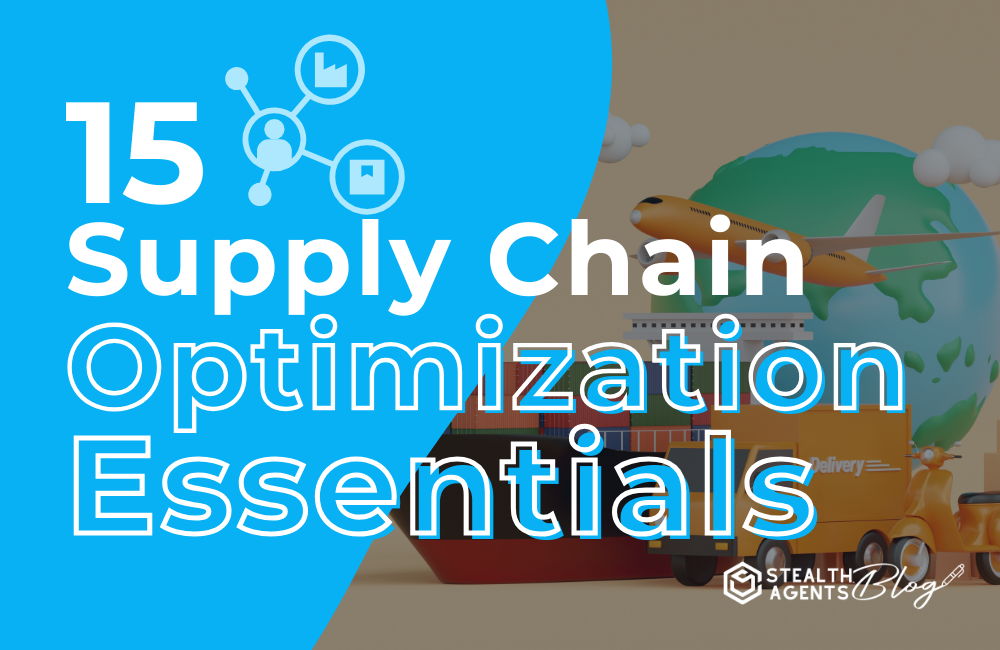15 Supply Chain Optimization Essentials
Welcome to our guide on 15 Supply Chain Optimization Essentials!
In today’s fast-paced business world, efficient and effective supply chain management is crucial for success. That’s why we’ve compiled a list of essential tips and strategies to help you optimize your supply chain.
-
Demand Forecasting:
Predicting customer demand to ensure the supply chain has the right amount of products, at the right time, to meet demand.
-
Inventory Management:
The supervision of non-capitalized assets (inventory) and stock items, ensuring optimal stock levels are maintained to meet demand without excessive surplus.
-
Supplier Relationship Management:
Developing and managing partnerships with suppliers to ensure quality, efficiency, and timely delivery of goods.
-
Transportation Management:
Overseeing the planning and execution of product transportation, focusing on optimizing routes and load, and minimizing shipping costs and times.
-
Warehouse Management:
Efficiently controlling the movement, storage, and processing of inventory within a warehouse.
-
Lean Inventory:
Adopting lean manufacturing principles to minimize inventory levels and reduce waste.
-
Just-In-Time (JIT) Inventory:
A strategy to increase efficiency and decrease waste by receiving goods only as they are needed in the production process.
-
Supply Chain Integration:
Ensuring all parts of the supply chain work seamlessly together, often involving the integration of information technology systems.
-
Risk Management:
Identifying, assessing, and mitigating risks to the supply chain to prevent disruptions.
-
Sustainable Supply Chain:
Implementing environmentally and socially responsible practices across the supply chain.
-
Analytics and Data-Driven Decision Making:
Using data analytics to make informed decisions and predictions about supply chain management.
-
Customer-Centric Supply Chain:
Designing and managing supply chains with a primary focus on customer needs and preferences.
-
Global Supply Chain Management:
Managing supply chain operations on a global scale, dealing with complexities of cross-border logistics, diverse regulations, and multiple stakeholders.
-
Supply Chain Visibility:
Having a transparent view of all supply chain activities, often enabled by technology, to monitor and control processes more effectively.
-
Collaborative Planning, Forecasting, and Replenishment (CPFR):
A concept that allows suppliers and customers to share information to improve the efficiency of supply chain operations.
Understanding and effectively managing these elements can significantly enhance the competitiveness and operational efficiency of a business’s supply chain.









